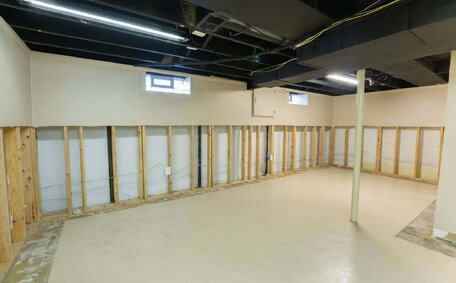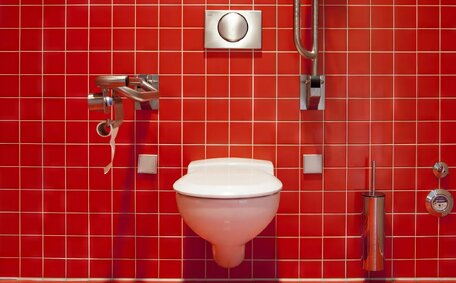Introduction to Cast Iron Pipe Relining
Cast iron pipes have been a staple of residential plumbing for decades, but over time, these pipes can start to corrode and crack. Cast iron pipe relining offers a solution that can extend the life of your home’s plumbing without the major expense and disruption of completely replacing the pipes.
Pipe relining involves applying a thin epoxy coating to the inside of the existing cast iron drain pipes. Once complete, the epoxy lining helps prevent further corrosion and damage from tree roots.
This epoxy layer seals cracks and holes in the pipe, preventing leaks and creating a smooth surface that allows water to flow freely. This epoxy layer seals cracks and holes in the pipe, preventing leaks and creating a smooth surface that allows water to flow freely.
Relining cast iron pipes is an affordable way to fix issues like sewer odours, slow drainage, backups, and pipe damage before it escalates into a much larger and more expensive problem. If you notice any signs of deterioration in your cast iron pipes, have a professional plumber inspect them and discuss relining as a repair option.
It can extend the life of your home’s plumbing for decades.
Signs You May Need Pipe Relining
There are a few key signs that your cast iron pipes may be deteriorating and in need of relining:
- Frequent clogs or slow drainage: If you find yourself plunging drains more often or waiting longer for sinks and tubs to drain, it could mean your pipes are clogged with debris, corroded, or damaged.
- Sewer odours: Catching whiffs of rotten eggs or sewage smells inside your home is a telltale indicator of a crack or leak in your plumbing.
- Backups and flooding: Sewage backing up into sinks, tubs or toilets points to a blockage or collapse in your sewer line.
Other signs include leaky pipes causing water spots on ceilings and walls, lush patches of grass or depressions in the yard over the sewer line, and foundation cracks near plumbing.
If you notice any of these issues, have a professional plumber inspect your pipes. If you notice any of these issues, have a professional plumber inspect your pipes.
The sooner pipe damage is addressed, the better. Left unchecked, problems will worsen and repairs will become more complex and costly. Relining early on can extend the life of your pipes for decades while avoiding expensive replacement.
What is Pipe Relining?
Pipe relining is a trenchless method of repairing damaged sewer and drain pipes without having to dig them up and replace them. It involves coating the inside of the existing pipes with an epoxy resin liner, essentially creating a new pipe within the old pipe.
As cast iron and other types of pipes age, they can start to corrode, crack, leak, have blockages from buildups, and allow root intrusions.
Excavating and replacing pipes is expensive, disruptive to landscapes, and can damage surrounding infrastructure. That’s where relining comes in - it renews old pipes from the inside so they keep working properly.
The process begins with a plumber running a special liner material coated with epoxy resin through the length of the pipe. This flexible liner expands to fit flush against the inner walls. The epoxy is then cured using hot water or steam to harden it, leaving a smooth, jointless inner pipe.
Relining is an eco-friendly and cost-effective solution that can restore pipes for decades and even increase capacity. If you notice any of these issues, have a professional inspect and advise on the best repair method.
It also takes just one to two days, avoiding lengthy downtimes. Signs that cast iron pipes need relining include odours, clogs, backups and damage.
Pipe Relining vs Pipe Replacement
Pros of Pipe Relining
- Much less invasive than full replacement - requires no digging or destruction to floors, walls, landscaping, etc.
- Far more affordable than replacement
- Works well on pipes of all materials - cast iron, clay, concrete, PVC, etc.
- Cured epoxy lining seals cracks, holes and joints
- Restores flow and pressure by smoothing the interior pipe surface
- Extends pipe lifespan by 50 years or more
- Only takes 1-2 days to complete with no major disruption
- Prevents future root intrusions and corrosion
Cons of Pipe Relining
- Not effective on pipes that have completely collapsed or disintegrated
- Old access points in the pipe system may need to be dug up
- Not a solution for upgrading pipe size or capacity
Pros of Pipe Replacement
- Allows for increasing pipe size and flow capacity
- Lets you replace extremely damaged pipes
- Opportunity to update material from cast iron to PVC
Cons of Pipe Replacement
- Much higher cost than relining
- Yard excavation often required, resulting in landscape damage
- Potential to harm surrounding pipes, wiring, tree roots, etc.
- Floors and walls usually need to be opened up for access
- Extended completion time with high disruption
In summary, pipe relining is typically the most cost-effective and quickest option that will extend the life of your plumbing for decades. Replacement may be needed for completely deteriorated pipes or capacity upgrades. Consult a professional plumber to assess your specific situation.
How Pipe Relining Works
Relining cast iron pipes involves a multi-step process that restores your plumbing without major excavation:
- Evaluation - A plumber first thoroughly inspects the pipe with a camera to assess damage and determine if relining is appropriate. Bypasses may be setup if needed.
- Cleaning - The existing pipe is cleaned using hydraulic pressure to remove any built-up debris or deposits.
- Resin coating - A felt liner soaked in epoxy resin is inserted into the pipe and expanded using air pressure until it coats the interior.
- Curing - Hot water or steam is pumped through to cure and harden the epoxy resin into a smooth, jointless lining.
- Reconnection - Once cured, the pipe is reconnected to drainage and plumbing systems and put back into service.
The epoxy lining seals cracks, fills holes, and provides corrosion resistance. It also smoothes out the pipe interior to improve drainage flow. This trenchless method takes just 1-2 days with minimal disruption to your home or property.
Relined pipes can last 50 years or more. Relined pipes can last 50 years or more. If severe corrosion is found, a new liner may need to be installed.
Over time, cast iron pipe walls will continue to slightly corrode but the epoxy lining will remain intact.
Conclusion
As cast iron pipes continue to age, deterioration and damage become inevitable.
Pipe relining offers a cost-effective, minimally invasive solution to restore your home’s plumbing and avoid the major expense of full replacement. By sealing cracks, smoothing the interior surface, and providing corrosion resistance, epoxy pipe relining can extend the lifespan of your existing pipes for decades to come.
Some key takeaways on pipe relining for cast iron pipes include:
- Fixes issues like leaks, clogs, poor drainage without excavation
- A fraction of the cost of complete pipe replacement
- Restores flow and pressure capacity in old pipes
- Only takes 1-2 days with minimal home disruption
- Strengthens pipes and prevents future root damage
- Can add 50 years or more of life to your plumbing
If your cast iron pipes are showing any signs of damage like sewer odours or frequent clogs, have them inspected right away. The sooner you can relinen, the more affordable the repair will be. An expert plumber can evaluate your situation and advise you on the best solution.
To learn more or schedule an appointment for your cast iron pipes, please feel free to email us or call 123-456-7890. Our team at St Peters Plumbing has the experience to inspect your plumbing, diagnose issues, and recommend the ideal pipe relining or replacement options.
Don’t wait until problems escalate and repairs become costly. Contact us today to keep your plumbing running smoothly for years to come.






